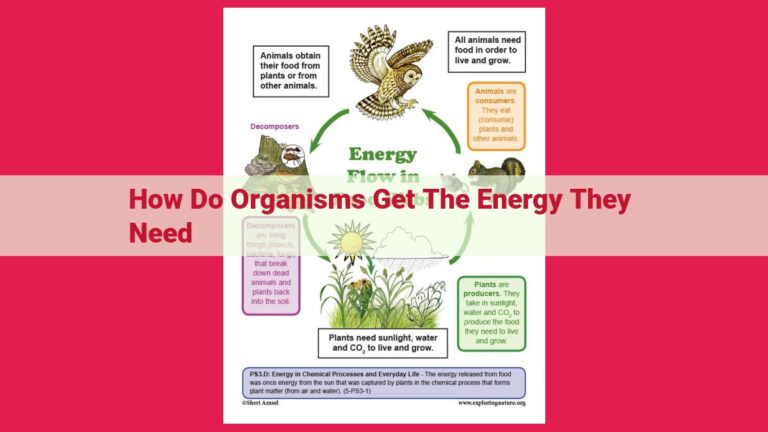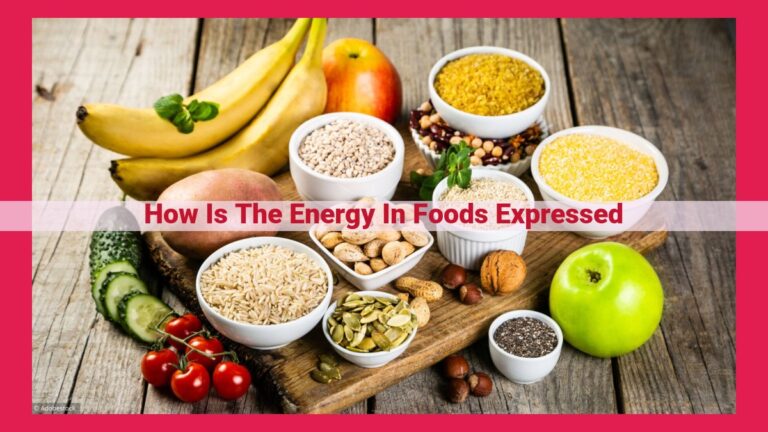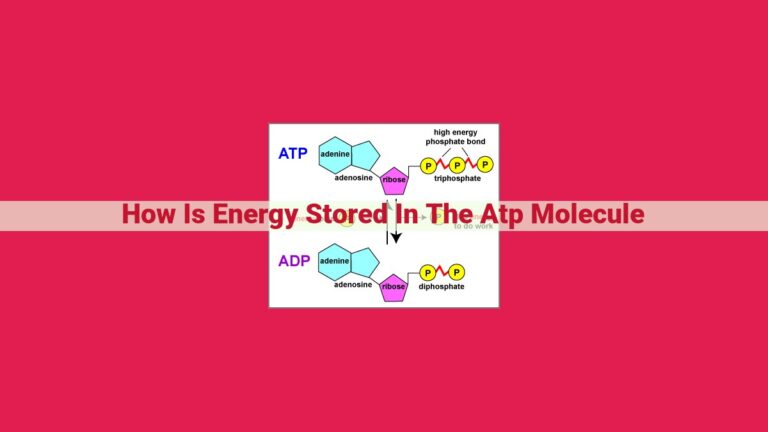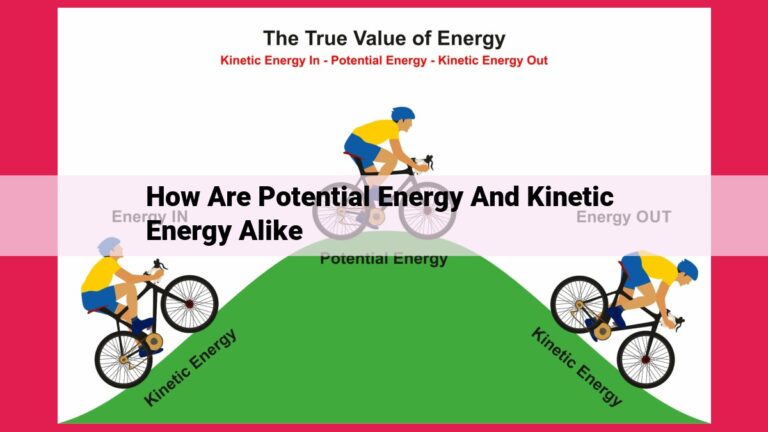Cellular Respiration And Photosynthesis: The Vital Interplay Sustaining Earth’s Ecosystems
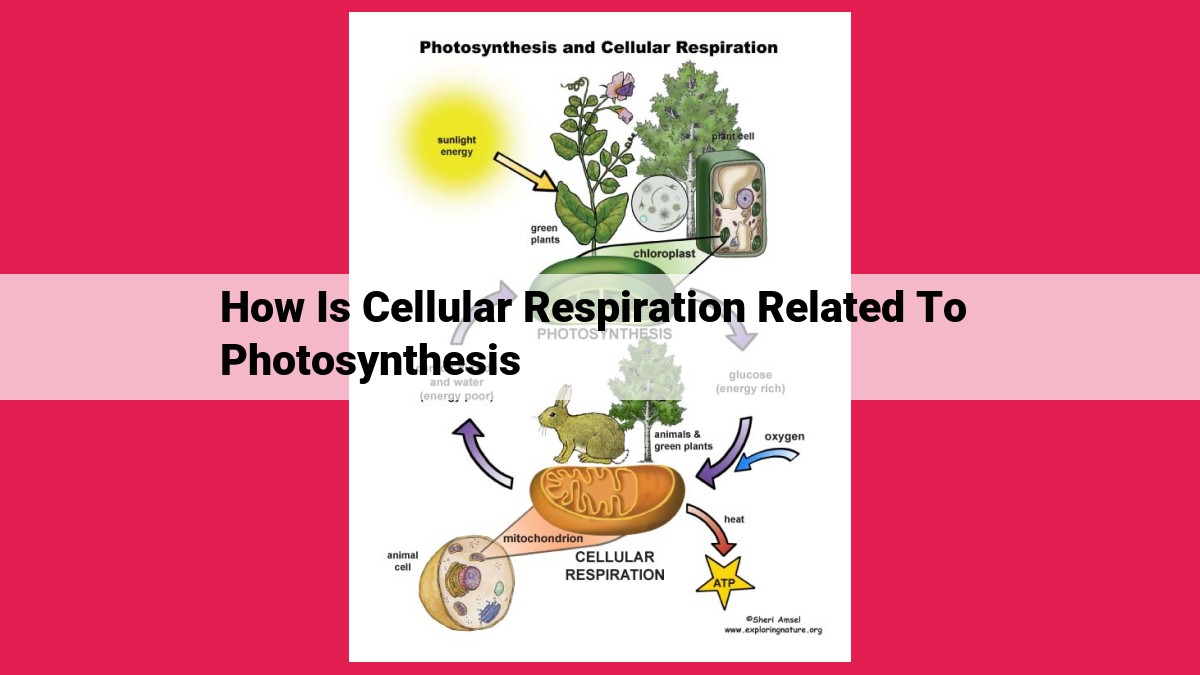
Cellular respiration and photosynthesis are interconnected processes that sustain life on Earth. Photosynthesis harnesses sunlight to produce glucose and oxygen, which cellular respiration utilizes to generate energy for organisms. The oxygen released by photosynthesis is consumed by cellular respiration, while the carbon dioxide released by cellular respiration is used in photosynthesis. This cyclic exchange ensures a continuous flow of energy and matter within ecosystems and supports the diversity of life on our planet.
The Sun’s Energy: The Foundation for Life
In the grand tapestry of life on Earth, two interconnected processes, cellular respiration and photosynthesis, play an essential role. Woven together by the sun’s radiant energy, these processes form the very foundation of life, sustaining all living organisms.
Photosynthesis, the process by which plants harness sunlight, is where the story begins. This remarkable process captures the sun’s energy and uses it to transform carbon dioxide and water into glucose, a vital food source for all life.
Meanwhile, cellular respiration, the process by which organisms release energy from glucose, takes center stage. Like a finely tuned engine, cellular respiration utilizes glucose as fuel, producing ATP, the energy currency of cells, which powers all life’s myriad processes.
In this intricate dance of life, photosynthesis and cellular respiration are two sides of the same coin, interdependent and essential. Photosynthesis provides the fuel, glucose, while cellular respiration uses it to generate the energy that drives life’s wonders.
As the sun rises each day, casting its golden rays upon the Earth, it sets in motion a symphony of life. Through photosynthesis, plants become solar-powered factories, converting sunlight into glucose. This glucose becomes the sustenance that sustains all living organisms, from the tiniest microbes to the mightiest whales.
Cellular respiration, in turn, is the engine of life, powering every aspect of our existence. From the beating of our hearts to the firing of our neurons, cellular respiration provides the energy that makes life possible.
Together, photosynthesis and cellular respiration form a life-sustaining cycle, ensuring a continuous flow of energy through ecosystems. They are the foundation upon which all life on Earth depends, an irreplaceable duo that has shaped the history of our planet and will continue to sustain its wonders for generations to come.
Oxygen: The Dance of Byproduct and Reactant
In the intricate ballet of life’s processes, oxygen plays a pivotal role, waltzing between photosynthesis and cellular respiration. Photosynthesis, the sunlight-fueled dance of plants, releases oxygen as a byproduct, a byproduct that then becomes the essential currency for cellular respiration.
Like a metabolic acrobat, cellular respiration consumes oxygen as it effortlessly transforms glucose into ATP, the energy molecule that powers our cells. This intricate exchange maintains a delicate balance in our atmosphere, ensuring a steady supply of the vital gas.
Without this dance, life on Earth would be extinguished. Photosynthesis provides the foundation for life, while cellular respiration sustains it, ensuring a continuous flow of energy and the thriving diversity of life on our planet.
The Interplay of Cellular Respiration and Photosynthesis in the Plant Kingdom
In the intricate tapestry of life, cellular respiration and photosynthesis intertwine, playing complementary roles in the survival and prosperity of all living organisms. Plants, the green giants of our planet, stand as a testament to this symbiotic connection. Within their verdant leaves, a remarkable dance of energy transformation unfolds, weaving together the threads of life on Earth.
Let us delve into the remarkable journey that plants undertake, orchestrating both cellular respiration and photosynthesis within their intricate biological systems.
Photosynthesis: Harvesting the Sun’s Energy
Sunlight, the lifeblood of our planet, pours its golden rays upon the leaves of plants, kick-starting the miraculous process of photosynthesis. These leafy powerhouses possess a remarkable molecular machinery known as chlorophyll, which absorbs the energy of sunlight and uses it to split water molecules. This splitting of water yields oxygen as a byproduct, which is released into the atmosphere.
Simultaneously, the energy harvested from sunlight is harnessed to convert carbon dioxide into glucose, the primary fuel for plants. This sugary substance is the foundation of plant growth, fueling their cells and providing the energy for their various metabolic processes.
Cellular Respiration: Utilizing Stored Energy
While photosynthesis allows plants to capture and store solar energy in the form of glucose, cellular respiration is the process by which they harness this stored energy to power their vital functions. Glucose molecules, broken down through a series of chemical reactions, release the energy required for the plant’s growth, development, and reproduction.
The Oxygen Connection
Interestingly, the oxygen released as a byproduct of photosynthesis is the same oxygen that plants consume during cellular respiration. This interplay highlights the interconnectedness of these two processes. While photosynthesis provides the oxygen necessary for cellular respiration, cellular respiration consumes the oxygen to generate energy, completing the cycle.
The Importance of Plants
The dual roles of cellular respiration and photosynthesis in plants are indispensable for the survival of life on Earth. These processes not only provide plants with the energy they need to thrive but also contribute to the overall balance of our planet’s atmosphere. The oxygen released by photosynthesis is essential for all aerobic life, including humans.
Moreover, plants serve as the foundation of the food chain, providing energy and nutrients to countless species. By converting sunlight into glucose, plants ultimately support the entire web of life on our planet.
In conclusion, the interplay of cellular respiration and photosynthesis in plants is a testament to the intricate harmony that exists within the natural world. These processes, working in concert, create the conditions necessary for life to flourish and thrive on Earth.
How is Cellular Respiration Related to Photosynthesis?
The Sun’s Energy: The Foundation for Life
In the tapestry of life on Earth, two fundamental processes intertwine: photosynthesis and cellular respiration. Both are intricately linked through the sun’s energy, the lifeblood of our planet. Photosynthesis harnesses sunlight to produce glucose, a sugar molecule that fuels cellular respiration, and subsequently generates energy in the form of ATP.
Oxygen: Interplay of Byproduct and Reactant
Photosynthesis releases oxygen into the atmosphere, a byproduct that’s essential for cellular respiration. This oxygen acts as a reactant, combining with glucose during cellular respiration to produce ATP, releasing water and carbon dioxide. This reciprocal relationship maintains atmospheric oxygen levels and supports the delicate balance of life.
Plants: The Nexus of Cellular Respiration and Photosynthesis
Plants hold a pivotal role in this interconnected dance. They perform both photosynthesis and cellular respiration, converting sunlight into glucose through photosynthesis and utilizing cellular respiration for their energy needs. This dual functionality underscores the interdependence of life processes within ecosystems.
Essential for Life on Earth
Cellular respiration and photosynthesis are cornerstones of life. They ensure a continuous flow of energy through ecosystems, supporting the diversity of life on our planet. Photosynthesis converts sunlight into a usable energy source, while cellular respiration utilizes that energy to power cellular processes.
Together, these processes drive the evolution of species and provide the metabolic foundation for all living organisms. From the smallest bacteria to the towering redwood trees, life on Earth depends on the intricate interplay of cellular respiration and photosynthesis.
